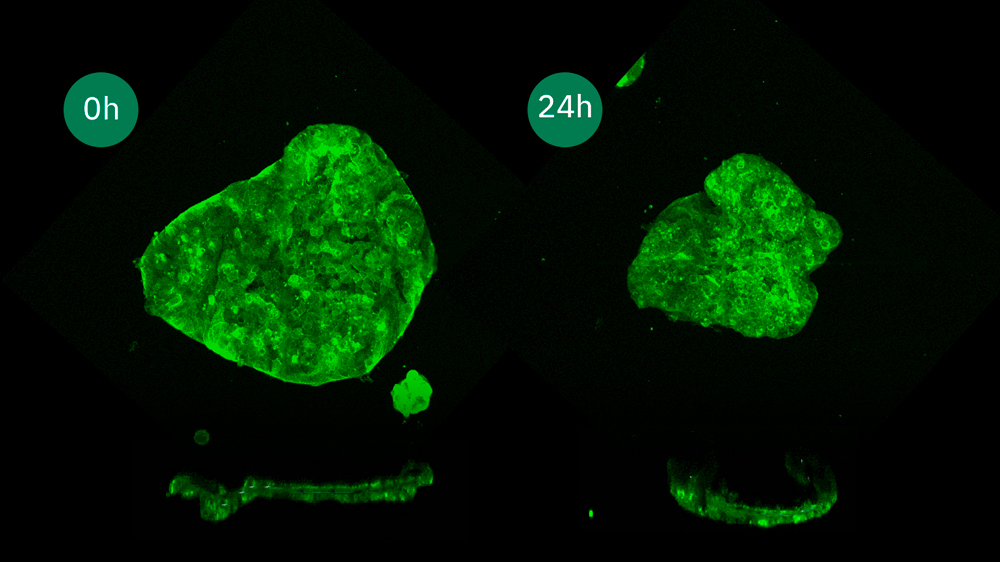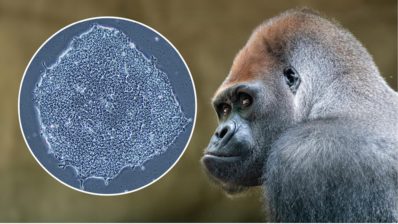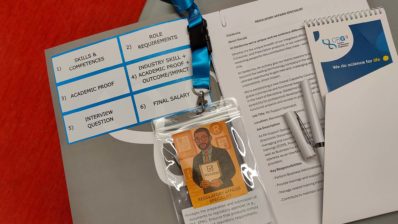Guillermo Martínez-Ara, who has recently finished his PhD at the Synthetic Developmental Biology laboratory, led by Miki Ebisuya at the European Molecular Biology Laboratory – Barcelona (EMBL) (Congratulations!), shows us in this image how cell colonies fold when light is applied to them.
In the upper part of the image we observe the change that the group of cells has undergone 24h after the application of light, and in the lower part, we see a lateral cut where we can see how the line of cells has begun to curve. This is the result of the use of an optogenetic tool that the scientific team has designed in a recent study and which will allow researchers to study how organisms acquire their shape during development.
The tool is based on the Shroom3 protein that regulates apical constriction, a process of reduction (or constriction) of the upper side of cells. It is an important process during development as it initiates the curvature of tissues leading to, for example, the formation of the intestine or kidneys. Modification of this protein has led to OptoShrrom3, which is activated and deactivated depending on whether or not blue light is applied. The results show that, upon application of light, neural and epithelial cells begin to undergo, in less than a minute, apical constriction.
“Our long-term goal is to use this tool to modulate the shape of organisms”
Miki Ebisuya, Group leader at EMBL Barcelona
The study, performed on groups of canine and human cells in culture and on human organoids, shows that the tool is useful for promoting cell elongation and their collective movement. Having demonstrated its efficacy in mammalian cells, the research team hopes to be able to use it “to modify the shape of organisms in the future”. In this link you can see in motion how the cells change shape.
Do you want to see your photo here? Send us images related to science or life at PRBB to ellipse@prbb.org.
Martínez-Ara, G. et al. 2022. Optogenetic control of apical constriction induces synthetic morphogenesis in mammalian tissues. Nature Communications. doi: 10.1038/s414567-022-33115-0






